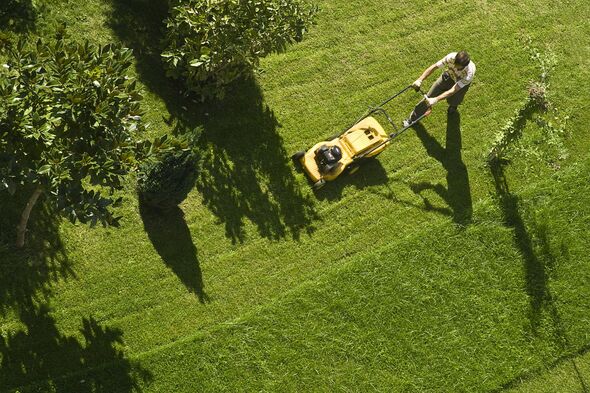Lifestyle
Experts Warn Gardeners Against Mowing Mistakes This August

Gardeners are being cautioned to avoid a significant mistake when mowing their lawns during August, as improper practices could lead to lasting damage to the grass. Experts emphasize the importance of assessing whether the grass is actively growing before proceeding with mowing. During hot and dry spells, many lawns enter a state of dormancy, which is a natural response to cope with extreme temperatures.
According to John Steiner, Regional Manager of NaturaLawn of America, homeowners and lawn care services often adhere to a strict mowing schedule earlier in the year. He noted, “Earlier in the year, when lawns were growing, many homeowners and lawn mowing services were cutting at least once per week. However, in August, if the lawn has gone dormant, or is under stress, this practice of mowing can be harmful to the grass.”
He advises that mowing should only occur if the grass is actively growing. “Do not follow the calendar,” Steiner cautioned. “You may even find that areas of the lawn growing in a shade garden will need to be mowed while areas in the sun do not.” When mowing, it is crucial to use a sharp blade and to avoid removing more than one-third of the grass blade to maintain lawn health.
Common Lawn Care Pitfalls
In addition to mowing challenges, gardeners frequently make other common errors, such as overwatering or inconsistently switching between watering and not watering. Kate Copsey, author of Month-by-Month Gardening, explains that if a lawn composed of cool-season grasses has turned brown, it may be experiencing dormancy. This is a normal occurrence, and the lawn will typically recover when cooler weather returns.
“Switching back and forth because the lawn is going brown is detrimental to the lawn in the long run,” Copsey stated. She also highlighted that by September, as temperatures decrease and rainfall becomes more frequent, lawns will likely emerge from dormancy.
For lawns that remain active, regular watering is essential. Steiner recommends watering approximately once a week, providing around 1.5 inches of water weekly, either from rainfall or irrigation. Morning watering is preferred to ensure the grass absorbs moisture effectively.
Aerating the lawn in late summer can also enhance soil health by relieving compaction and improving the uptake of water and nutrients. For areas showing bare patches, late August presents a suitable time to begin reseeding or patching with compost or straw.
Before fertilizing, experts suggest conducting a soil test to prevent the unnecessary application of fertilizers. Additionally, limiting foot traffic on dry and brown lawns is advisable, as walking on dormant grass can exacerbate stress and hinder recovery.
As September approaches, cooler temperatures and increased rainfall are expected to help most lawns bounce back. With appropriate care and attention to these expert recommendations, gardeners can maintain the health and appearance of their lawns throughout the season.
-

 Lifestyle2 weeks ago
Lifestyle2 weeks agoMilk Bank Urges Mothers to Donate for Premature Babies’ Health
-

 Lifestyle2 weeks ago
Lifestyle2 weeks agoShoppers Flock to Discounted Neck Pillow on Amazon for Travel Comfort
-

 Politics2 weeks ago
Politics2 weeks agoMuseums Body Critiques EHRC Proposals on Gender Facilities
-

 Business2 weeks ago
Business2 weeks agoTrump Visits Europe: Business, Politics, or Leisure?
-

 Politics1 week ago
Politics1 week agoCouple Shares Inspiring Love Story Defying Height Stereotypes
-

 Lifestyle2 weeks ago
Lifestyle2 weeks agoJapanese Teen Sorato Shimizu Breaks U18 100m Record in 10 Seconds
-

 World2 weeks ago
World2 weeks agoAnglian Water Raises Concerns Over Proposed AI Data Centre
-

 Sports2 weeks ago
Sports2 weeks agoBournemouth Dominates Everton with 3-0 Victory in Premier League Summer Series
-

 World3 weeks ago
World3 weeks agoWreckage of Missing Russian Passenger Plane Discovered in Flames
-

 Lifestyle3 weeks ago
Lifestyle3 weeks agoShoppers Rave About Roman’s £42 Midi Dress, Calling It ‘Elegant’
-

 World3 weeks ago
World3 weeks agoInquest Resumes for Jay Slater Following Teen’s Tragic Death
-

 Sports3 weeks ago
Sports3 weeks agoSeaham Red Star Begins New Chapter After Relegation Setback









